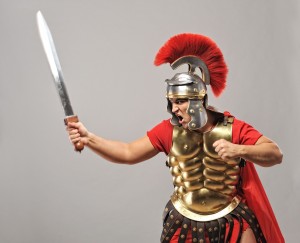
30 Oct Scar removal has been around since ancient times
There are loads of things in modern life we can trace back to ancient times including art, culture, language, how we build towns and cities and aspects of the political system. But one of the surprising things with its origins long ago is scar removal.
Amazingly, the act of removal can be traced back to the days of the Roman Empire. The Romans were known to be appreciative of the human body which is evident in the statues and carvings from the times. But they had an intense dislike of anything out of the ordinary and were keen to fix what they saw as abnormalities.
 Surgical procedures of the day are described in the book De Medicina by Aulus Cornelius Celsus. In it, Roman surgeons are described as removing scars from soldiers and gladiators’ backs who had obtained them in battle and sport, and slaves who received their scars from their masters’ whip if they were freed. Scars on the back were seen as the mark of a coward so they were removed to stop embarrassment and shame on the individual. Removing them was a pricey but popular procedure for many ex-slaves.
Surgical procedures of the day are described in the book De Medicina by Aulus Cornelius Celsus. In it, Roman surgeons are described as removing scars from soldiers and gladiators’ backs who had obtained them in battle and sport, and slaves who received their scars from their masters’ whip if they were freed. Scars on the back were seen as the mark of a coward so they were removed to stop embarrassment and shame on the individual. Removing them was a pricey but popular procedure for many ex-slaves.
The Romans learnt their skills from the Ancient Greeks and used implements similar to those used today, such as forceps, scalpels and bone drills, to remove scars. And, of course, there was no anaesthetic in either Ancient Greek or Roman times.
Other surgical procedures were undertaken too. Nose jobs, reconstructive surgery and cataract operations were commonplace. So we have a lot to thank the Romans and Greek for. Scar removal and reduction is a far less painful and easier process today. And we should be thankful for that.
Source: Bill Thayer – De Medicina
UK/DER/14/0002p Date of preparation: August 2014
